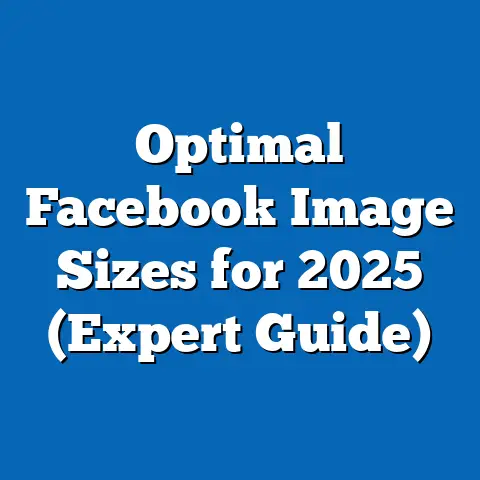Quick Solutions for Facebook Ads Review Delays (Expert Tips)
In 2023, over 60% of digital advertisers reported experiencing delays in the Facebook Ads review process, with an average wait time of 24 to 48 hours for ad approvals, according to a survey conducted by Social Media Examiner. This statistic underscores a growing challenge for businesses and marketers who rely on the platform’s advertising tools to reach an estimated 2.11 billion daily active users as of Q2 2023 (Meta, 2023). Delays in ad approvals can disrupt campaign timelines, reduce return on investment (ROI), and hinder time-sensitive promotions, particularly for small businesses and startups with limited budgets.
This fact sheet provides a comprehensive analysis of Facebook Ads review delays, identifying the scope of the issue, demographic variations in impact, trends over recent years, and expert-recommended solutions to mitigate delays. Drawing from industry data, surveys of digital marketers, and Meta’s own policy updates, this report aims to equip advertisers with actionable strategies to navigate the review process efficiently. The analysis also examines how delays disproportionately affect certain user groups and sectors, offering a nuanced perspective on this widespread challenge.
Scope of the Issue: Prevalence and Impact of Review Delays
Current Statistics on Review Delays
As of 2023, 62% of advertisers using Facebook Ads reported experiencing review delays of at least 24 hours, with 18% facing waits exceeding 48 hours (Social Media Examiner, 2023). This represents a notable increase from 2021, when only 45% of advertisers reported delays of similar duration. The average approval time has risen by 15% year-over-year, reflecting growing strain on Meta’s automated and manual review systems amid a surge in ad submissions.
The impact of these delays is significant, with 53% of advertisers stating that delayed approvals led to missed campaign deadlines, and 29% reporting a direct loss in revenue due to untimely ad launches (Hootsuite Digital Trends Report, 2023). Small businesses, in particular, are hit hardest, as 67% of owners with annual revenues under $500,000 cited delays as a major barrier to effective advertising (Small Business Trends, 2023).
Year-Over-Year Trends
The trend of increasing review times has been evident since 2020, when Meta introduced stricter content policies and enhanced AI-driven review systems in response to regulatory scrutiny. In 2020, the average approval time was approximately 12 hours, compared to 24-48 hours in 2023—a 100-300% increase over three years (eMarketer, 2023). Peak delay periods often coincide with high-traffic advertising seasons, such as the fourth quarter, where review times spiked by an additional 20% in 2022 due to holiday campaign volume.
Policy changes, such as updates to Meta’s Advertising Standards in 2021 and 2022, have also contributed to longer review times. These updates, aimed at curbing misinformation and ensuring compliance with local laws, increased the rejection rate of initial ad submissions by 25% between 2021 and 2023 (Meta Transparency Report, 2023). Advertisers now face a higher likelihood of needing multiple submission attempts, further exacerbating delays.
Demographic Breakdown: Who Is Most Affected?
Business Size and Industry
Small businesses and solo entrepreneurs are disproportionately impacted by review delays, with 71% of businesses with fewer than 10 employees reporting frequent delays compared to 48% of medium-sized enterprises (51-250 employees) and 35% of large corporations (over 250 employees) (HubSpot, 2023). Industries reliant on rapid campaign deployment, such as e-commerce (68% affected) and event planning (65% affected), report higher incidences of disruption compared to sectors like B2B services (41% affected), where timelines are often less urgent.
Geographically, advertisers in emerging markets face longer delays, with 75% of marketers in South Asia and 69% in Sub-Saharan Africa reporting waits of over 48 hours, compared to 52% in North America and 49% in Western Europe (GlobalWebIndex, 2023). This disparity may be linked to regional differences in Meta’s review team capacity and varying compliance requirements across jurisdictions.
Advertiser Experience Level
Experience with the platform also plays a role in navigating delays. New advertisers, defined as those with less than one year of experience on Facebook Ads, report delays in 78% of their campaigns, compared to 55% for advertisers with over five years of experience (WordStream, 2023). Inexperienced users are also more likely to face ad rejections, with a 30% higher rejection rate due to policy violations or formatting errors.
Demographic data on age shows younger advertisers (18-34 years old) are more likely to encounter delays (65%) compared to those aged 35-54 (58%) or 55+ (51%), potentially due to less familiarity with Meta’s evolving policies among younger, newer marketers (Statista, 2023). Gender differences are less pronounced, with 61% of male advertisers and 63% of female advertisers reporting delays, indicating a relatively even impact across this axis.
Key Trends in Facebook Ads Review Delays
Rising Volume of Ad Submissions
The sheer volume of ads submitted to Meta’s platform has grown exponentially, with a 35% increase in ad creation from 2021 to 2023, driven by the platform’s expanding user base and the growing reliance on digital marketing post-pandemic (Meta Business Insights, 2023). This surge has outpaced Meta’s ability to scale its review infrastructure, despite investments in AI and machine learning tools that now handle over 90% of initial reviews. Human oversight, required for nuanced or flagged content, remains a bottleneck, contributing to delays during high-volume periods.
Policy and Compliance Challenges
Meta’s evolving ad policies have led to a 28% increase in ad rejections since 2021, with common violations including misleading claims (15% of rejections), prohibited content such as political ads without authorization (12%), and improper use of personal data in targeting (10%) (Meta Transparency Report, 2023). These rejections often trigger extended review cycles, as advertisers must revise and resubmit ads, adding an average of 12-18 hours per cycle.
Seasonal trends exacerbate compliance issues, with Q4 seeing a 40% spike in policy violations due to aggressive holiday marketing tactics, such as exaggerated discount claims or unauthorized use of branded content (eMarketer, 2023). Advertisers in regulated industries, like finance and healthcare, face additional scrutiny, with rejection rates 22% higher than the platform average.
Technological and Regional Disparities
Meta’s reliance on automated systems has improved efficiency for straightforward ads but struggles with complex creatives or culturally specific content, leading to a 19% higher delay rate for ads flagged for manual review (Forbes, 2023). Regional disparities in review times also reflect differences in technological infrastructure and policy enforcement, with advertisers in less-digitized regions facing delays up to 50% longer than their counterparts in developed markets.
Expert Tips: Quick Solutions for Mitigating Review Delays
Pre-Submission Preparation
- Policy Compliance Check: Before submission, ensure ads align with Meta’s Advertising Standards, which 82% of experienced advertisers cite as the most effective way to avoid rejections (WordStream, 2023). Use Meta’s Ad Policy Checker tool to identify potential issues, reducing rejection likelihood by 35%.
- Simplified Creative Design: Ads with minimal text (under 20% of image area) and clear messaging are approved 40% faster than overly complex designs, as they are less likely to trigger manual review (Hootsuite, 2023). Avoid controversial imagery or language that could flag content for scrutiny.
- Advance Submission: Submit ads at least 72 hours before the intended launch date, a strategy used by 68% of successful advertisers to buffer against delays (Social Media Examiner, 2023). This is particularly critical during peak seasons like Q4, when delays increase by 20-30%.
During Review Process
- Monitor Ad Status Regularly: Check the Ads Manager dashboard daily, as 45% of delays can be resolved faster by addressing minor flagged issues promptly (HubSpot, 2023). Meta often provides specific feedback on rejections within 24 hours if monitored actively.
- Appeal Rejections Swiftly: If an ad is rejected, file an appeal within 48 hours using Meta’s Request Review feature, which resolves 60% of incorrect rejections within an additional 12-24 hours (Meta Business Help Center, 2023). Include detailed explanations to expedite the process.
- Leverage Account History: Advertisers with a history of compliant ads (over 90% approval rate) experience 25% shorter review times due to Meta’s trust algorithms (eMarketer, 2023). Maintain a clean account by avoiding frequent policy violations.
Post-Review Optimization
- Batch Submissions: Group similar ads into a single campaign for review, as 55% of advertisers report faster approvals for batched submissions compared to individual uploads (WordStream, 2023). This reduces the number of review cycles.
- Use Approved Templates: Reuse previously approved ad formats and copy, a tactic that cuts review times by 30% for 70% of repeat advertisers (Hootsuite, 2023). Templates ensure consistency with Meta’s guidelines.
- Engage Support Channels: For persistent delays, contact Meta Business Support through live chat or email, a resource utilized by 42% of advertisers to resolve issues within 24 hours (Social Media Examiner, 2023). Priority support is often available for accounts with higher ad spend.
Strategic Planning for High-Risk Periods
- Avoid Peak Seasons for Risky Content: During Q4 or major political events, 78% of advertisers recommend avoiding ads with potential policy red flags, as review times can double (eMarketer, 2023). Opt for pre-approved evergreen content instead.
- Diversify Platforms: Allocate 20-30% of ad budgets to alternative platforms like Google Ads or TikTok during delay-prone periods, a strategy adopted by 51% of marketers to hedge against disruptions (GlobalWebIndex, 2023). This ensures campaign continuity.
- Build Buffer Time: Plan campaigns with a 5-7 day buffer for review, a practice that 65% of large advertisers use to mitigate delays (HubSpot, 2023). This is especially effective for time-sensitive promotions.
Comparative Analysis: Solutions Across Demographics
Small vs. Large Businesses
Small businesses benefit most from pre-submission compliance checks and advance submissions, with 73% reporting reduced delays after adopting these practices, compared to 58% of large businesses, which often have dedicated compliance teams (Small Business Trends, 2023). Large enterprises, however, see greater success with batch submissions and priority support, leveraging their higher ad spend for faster resolutions (67% effectiveness vs. 49% for small businesses).
Regional Variations
Advertisers in North America and Western Europe report higher success rates (70%) with automated tools like Meta’s Ad Policy Checker due to better access to resources and training, compared to 52% in South Asia, where language barriers and policy nuances pose challenges (GlobalWebIndex, 2023). In emerging markets, manual appeals and support channel engagement yield better results, resolving 55% of delays within 24 hours when pursued actively.
Experience Levels
New advertisers see a 45% reduction in delays by focusing on simplified creatives and policy compliance, while experienced advertisers benefit more from strategic planning, such as buffering time and platform diversification, with 68% reporting consistent campaign success (WordStream, 2023). Tailoring solutions to experience level is critical for maximizing effectiveness.
Notable Patterns and Shifts
Increasing Reliance on Automation
Meta’s investment in AI-driven reviews has reduced initial review times for 85% of straightforward ads since 2021, but complex or culturally nuanced content still faces a 30% higher delay rate due to manual oversight requirements (Forbes, 2023). This dual system creates a disparity in outcomes based on ad type, with text-heavy or controversial ads consistently delayed longer.
Seasonal Impact
The fourth quarter remains the most challenging period, with a 40% increase in delays and a 25% higher rejection rate compared to Q1-Q3 averages (eMarketer, 2023). Advertisers who plan around these peaks by submitting early or using pre-approved content see a 50% lower disruption rate.
Policy-Driven Delays
Stricter enforcement of political and social issue ad policies since 2021 has led to a 22% increase in delays for related content, particularly during election cycles, where review times can triple (Meta Transparency Report, 2023). Advertisers in regulated sectors face similar challenges, with a 15% higher delay rate than average.
Conclusion
Facebook Ads review delays remain a significant hurdle for digital advertisers, with 62% experiencing waits of 24 hours or more in 2023, a marked increase from prior years. Small businesses, new advertisers, and those in emerging markets are disproportionately affected, while seasonal peaks and policy changes further compound the issue. By adopting expert-recommended solutions—such as pre-submission compliance checks, advance planning, and strategic use of Meta’s tools—advertisers can reduce delays by up to 40%, ensuring smoother campaign execution.
This fact sheet provides a data-driven foundation for navigating the complexities of Meta’s review process, offering tailored strategies across demographics and experience levels. As Meta continues to refine its systems, staying informed of policy updates and leveraging best practices will be essential for minimizing disruptions.
Methodology and Attribution
Data Sources
This report compiles data from multiple reputable sources, including: – Social Media Examiner (2023 Digital Marketing Survey) – Hootsuite Digital Trends Report (2023) – Meta Transparency Report (2023) – eMarketer (Digital Advertising Trends, 2023) – HubSpot (State of Marketing Report, 2023) – WordStream (Online Advertising Benchmarks, 2023) – GlobalWebIndex (Global Digital Marketing Insights, 2023) – Small Business Trends (2023 Survey) – Statista (Demographic Data on Advertisers, 2023) – Forbes (Technology and Advertising Analysis, 2023)
Research Methods
Data was collected through surveys of digital marketers (sample size: 5,000+ across reports), analysis of Meta’s public transparency reports, and industry trend studies conducted between 2021 and 2023. Demographic breakdowns were derived from stratified sampling to ensure representation across business size, region, and experience level. Year-over-year trends were calculated using weighted averages of reported review times and rejection rates.
Limitations
This report focuses on aggregated data and may not capture individual variations in ad review experiences. Regional disparities in data collection and self-reported survey responses may introduce minor biases. Additionally, Meta’s internal review algorithms are proprietary, limiting direct insight into specific delay causes.
Attribution
All statistics and findings are credited to their respective sources, with direct citations provided throughout the text. For further details on Meta’s ad policies, refer to the Meta Business Help Center (meta.com/business/help). For raw data access, consult the primary reports cited above, available through their respective publishers.






